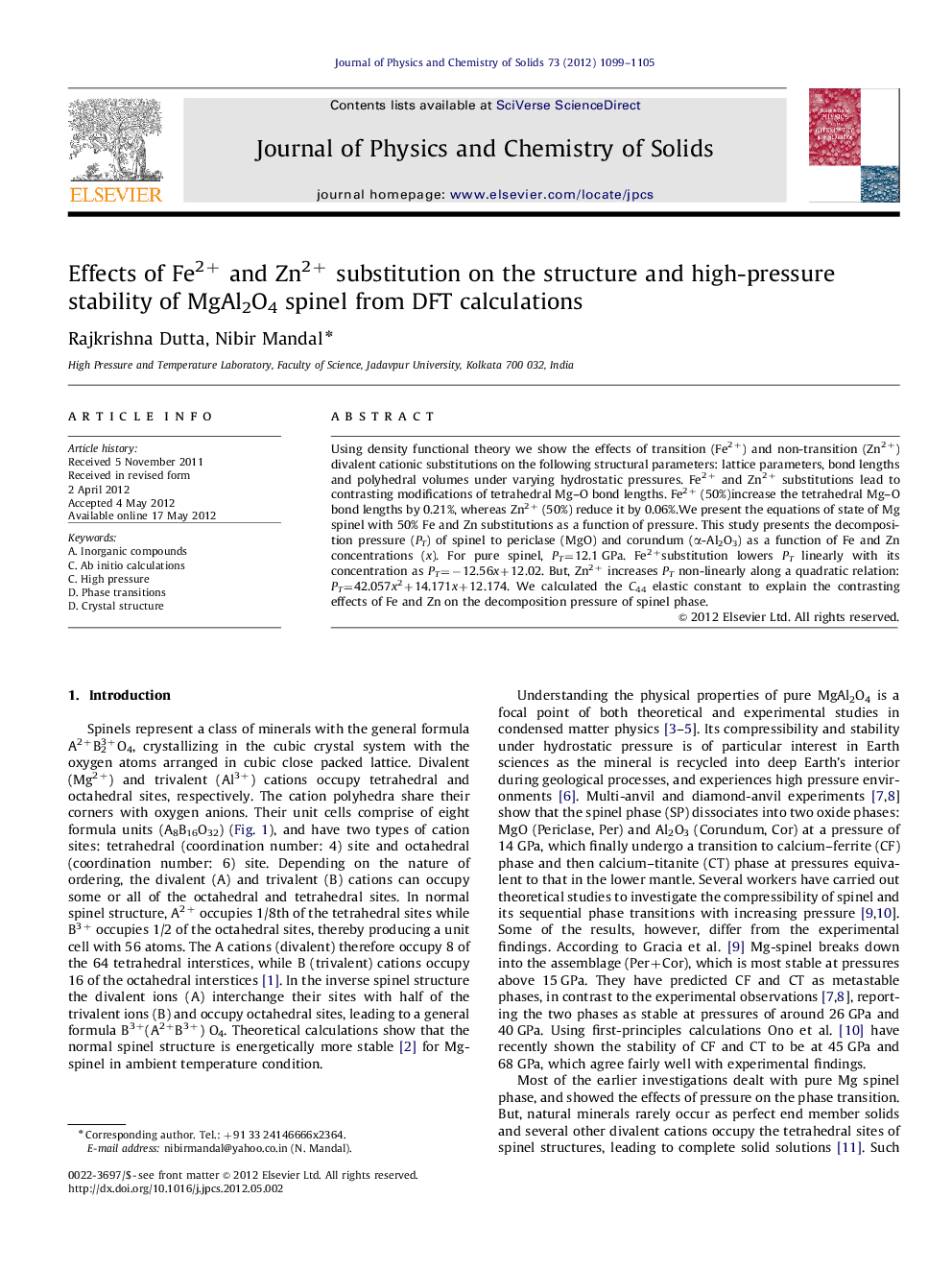| Article ID | Journal | Published Year | Pages | File Type |
|---|---|---|---|---|
| 1516078 | Journal of Physics and Chemistry of Solids | 2012 | 7 Pages |
Using density functional theory we show the effects of transition (Fe2+) and non-transition (Zn2+) divalent cationic substitutions on the following structural parameters: lattice parameters, bond lengths and polyhedral volumes under varying hydrostatic pressures. Fe2+ and Zn2+ substitutions lead to contrasting modifications of tetrahedral Mg–O bond lengths. Fe2+ (50%)increase the tetrahedral Mg–O bond lengths by 0.21%, whereas Zn2+ (50%) reduce it by 0.06%.We present the equations of state of Mg spinel with 50% Fe and Zn substitutions as a function of pressure. This study presents the decomposition pressure (PT) of spinel to periclase (MgO) and corundum (α-Al2O3) as a function of Fe and Zn concentrations (x). For pure spinel, PT=12.1 GPa. Fe2+substitution lowers PT linearly with its concentration as PT=−12.56x+12.02. But, Zn2+ increases PT non-linearly along a quadratic relation: PT=42.057x2+14.171x+12.174. We calculated the C44 elastic constant to explain the contrasting effects of Fe and Zn on the decomposition pressure of spinel phase.
► Cationic (Fe2+, Zn2+) substitutions in the tetrahedral sites of MgAl2O4 spinel. ► Phase transition of Mg-spinel to MgO+Al2O3 at a critical pressure (PT). ► Linear decrease of PT with Fe, whereas nonlinear increase with Zn concentration. ► Pressure derivative inversion of C44 elastic constant with Fe and Zn substitution. ► Contrasting changes in bond lengths and polyhedral volumes with pressure.
